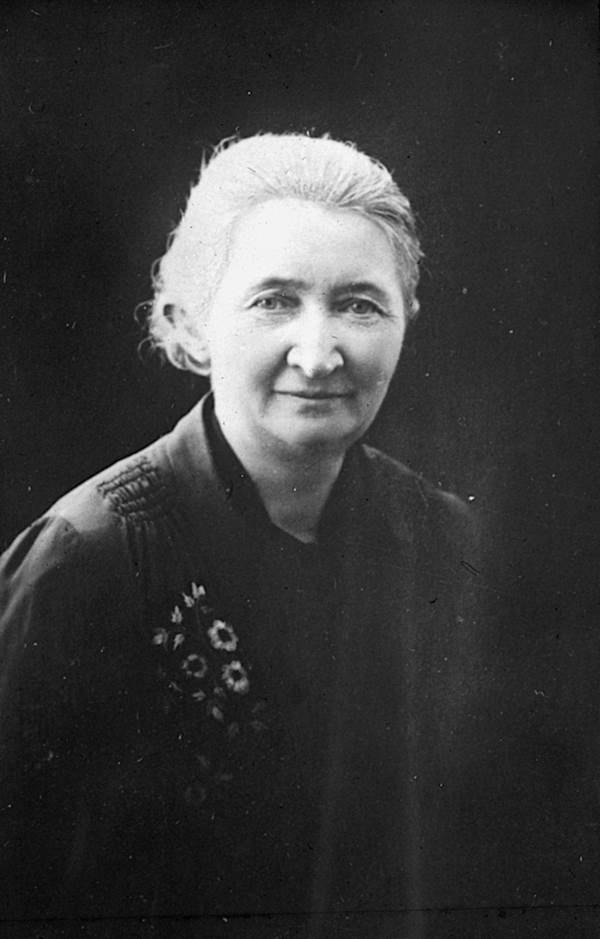This year marks the 85th anniversary of the death of Karen Jeppe, the guardian angel of Armenian orphans. Her memory is still alive, especially through the high school that bears her name in Aleppo, which constitutes a tribute to her sacrifice for the love of the Armenian people.
Karen Jeppe was born on July 1, 1876, in the town of Gylling (Denmark). She received her elementary education in the local school and, after learning German in Germany, she received her high school education at a boarding school in Copenhagen.
Learning about the Hamidian massacres awakened in her the desire to go to the assistance of the Armenians. In 1903, against her father’s will, she departed to Urfa to join the German Mission there.
Before leaving for Urfa, Karen Jeppe had sponsored two orphans, Louisa Natanian and Misak Melkonian. Afterwards, she adopted them, and they would end getting married to each other. In Urfa, she was in charge of the care and education of 300 orphans. Besides Armenian, she learned Arabic, Turkish, and Kurdish. After returning for a short time to Denmark in 1908, where she gave lectures about the Armenian tragedy, she returned to Urfa, where she would continue her educational and humanitarian work throughout the Armenian genocide.
She assisted the population engaged in the self-defense of Urfa, and after its tragic end, for two years Jeppe helped find hideouts for Armenians evading Turkish searches, including her two adoptive children. She was totally exhausted and suffered a nervous breakdown. She traveled to Denmark in 1917 for healing.
Karen Jeppe gave lectures and published articles in Denmark, where she depicted the catastrophic situation of the Armenians. She also organized fundraisers. She urged her adoptive children, who wanted to leave for Constantinople, Europe or America, to stay in Aleppo, where they had found refuge.
In 1921, she settled in Aleppo, where she devoted herself to serve the Armenian refugees. She counted on the support of the Society of Danish Friends of Armenians. She took widows and orphans under her wings in the shantytown of Suleimaniyeh and established a workshop in the neighborhood of Tillel to provide a source of income for Armenian women, which functioned for more than a quarter of a century. She cooperated with the efforts of the League of Nations to search for Armenian women and girls subjected to slavery and sexual exploitation. In 1922, Karen Jeppe was designated a representative of the League to deal with the settlement of Armenian migrants, especially in the north of Syria, where she founded the village of Tina, entirely populated by Armenians. Thousands of women and orphans returned to their Armenian identity thanks to her indefatigable efforts. At the same time, many refugees were able to find jobs to make a living.
In 1924, with funds provided by the League of Nations, she bought in her name an area of 10,000 square meters in the place called Meydan, where she had built nine one-floor pavilions with 80 rooms, where the widows and 200 orphans she supported found shelter. She lent material and moral support to the construction of the Sahagian School (1927) and the St. Gregory the Illuminator church (1930), both erected to the south of the Meydan. The refugees would give to the Meydan the name of Nor Kiugh (New Village).
In 1926, Karen Jeppe received an encyclical from Sahag II Khabayan, Catholicos of the Great House of Cilicia, and the order of the Legion of Honor of Denmark in the first degree. Two years later, the Prelate of Aleppo, Archbishop Ardavazt Surmeyan, organized a gathering of homage in the Haigazian School on the twenty-fifth anniversary of Karen Jeppe’s pro-Armenian activities.
Jeppe’s fragile health could not withstand the hard work. She contracted malaria and passed away on July 7, 1935, at the age of fifty-nine. She is buried in the Armenian cemetery of Aleppo. Twelve years after her death, thanks to the efforts of the Armenian Prelacy of Aleppo and the young Prelate, Very Rev. Fr. Zareh Payaslian (the future Catholicos Zareh I of the Great House of Cilicia), the Karen Jeppe Armenian College was founded where the Danish humanitarian had founded her pavilions. Years later, the pavilions were demolished and the modern building of the College was built. Her bust, placed in the courtyard, memorializes her.
